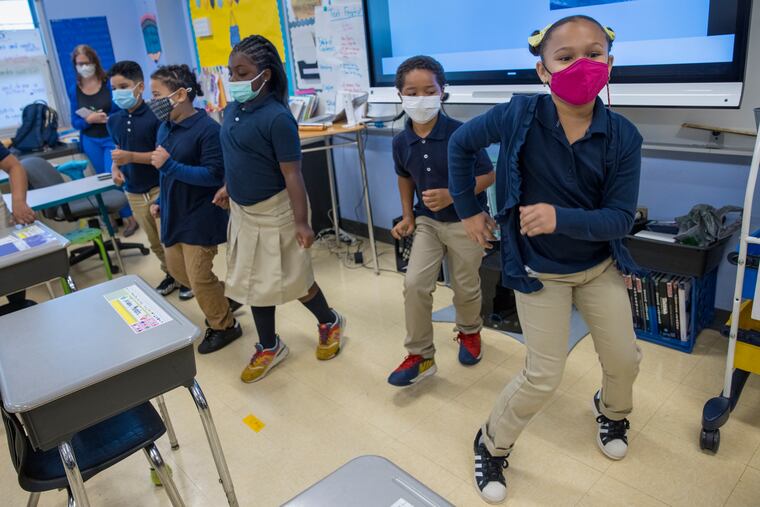Philly doctor and mom: School District’s post-holiday omicron plan isn’t good enough | Expert Opinion
With School District of Philadelphia schools slated to start in person on Tuesday, many questions remain unanswered.

Parents of children in Philadelphia public schools have watched as news reports cite record-breaking COVID-19 cases and have waited anxiously for a new plan from Philadelphia’s school leaders for how to best protect our children, educators, and the families and communities they touch — an especially important new need as the omicron variant surges after many holiday gatherings. Yet, with School District of Philadelphia schools slated to start in person on Tuesday, many questions remain unanswered.
Recent messaging from the School District of Philadelphia affirmed the district’s plan to open in person, but did not accurately communicate the potential for harm posed by the current COVID-19 surge and the omicron variant, or a clear plan to mitigate that harm. The district cites guidance that the current surge “is occurring during a time when all K-12 students and their caregivers have been offered vaccination,” but this guidance glosses over the reality that only one-quarter of children between the ages of 5 to 11 in Philadelphia have received one dose of the COVID-19 vaccine, or the fact that there are marked racial and ethnic disparities in pediatric vaccination rates. Returning to in-person school without a better mitigation plan at a time of unprecedented COVID-19 case rates risks exposing students and staff, including many unvaccinated students, exacerbating existing disparities in COVID-19 cases, and also risks increasing community spread.
» READ MORE: Snow and COVID-19 snarl school opening plans in the Philadelphia region
As a parent, I know that there are competing risks to virtual school: worsened loss of educational and socialization time, safety considerations for students, and challenges for families who do not have access to tools and supervision required for virtual school. Nevertheless, school communities deserve to know that officials are also properly considering the risks of in-person school, and how to mitigate them.
First, school communities should have better tools to mitigate the increased infectiousness associated with the omicron variant. For example, schools should partner with state and federal leaders to ensure that high-quality masks such as N95 or KN95 masks are available. Schools need to have a plan for staggered or outdoor lunch — a high-risk time when removal of masks is required to eat. The Philadelphia Department of Public Health has stated that widespread testing of all students and school staff prior to return cannot occur due to supply-chain issues, but school leaders need to share with school communities a plan to increase testing availability in schools. Finally, the School District of Philadelphia should coordinate with health-care providers and pharmacies to expand the number of school-supported vaccine events available in the coming weeks, and ensure that families have the information they need to vaccinate their kids.
Second, school and community leaders should make clear what the thresholds are for transitioning to virtual school. Everyone understands the COVID-19 situation can change fast and that the guidance may be updated. But school and public health leaders should better communicate the metrics they are tracking — such as community COVID-19 rates, total hospitalization rates, or pediatric hospitalization rates — and the thresholds that would prompt transition to virtual school. Prior guidance — before most vaccines were widely available — was that 9% or greater test positivity, or rapidly accelerating community disease transmission, was reason to consider temporary school closure. With recent test positivity rates well above that threshold, an updated threshold should be made clear.
Finally, as we move ahead with in-person learning, school leaders need to present a better plan to prepare students and school staff for the possibility that many schools may have to take a temporary “pause” either due to the (likely) case clusters in school or due to the (inevitable) staffing challenges if teachers and other school staff need to isolate because of COVID-19. School leaders need to communicate how they will address worsened staffing shortages when school staff must isolate and provide quarantine learning support for students who need to isolate. District leaders must also share a plan for meal distribution for students at schools that have to pause, and ensure every student has a working device and access to the internet to participate in remote school.
As we near the time when all children will finally be eligible for vaccination against COVID-19 and look forward to a new year in which we hope to finally move beyond this pandemic, we must all renew our efforts to keep our schools and city safe. The School District of Philadelphia’s first effort of 2022 is not good enough.
Rhea Powell is a physician in Philadelphia and the parent of two School District of Philadelphia students.